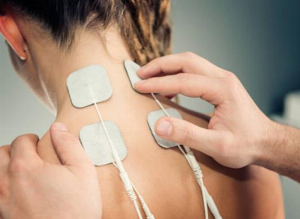Migraine: Everything there is to know about its treatments!
Published Mar 8, 2022 • By Candice Salomé
Migraine affects more than 15% of the world's population with a high prevalence in women (20% vs. 15% of men). It results in distinctive and severe headaches that can last from a few hours to a few days. While they are generally not life-threatening, depending on their intensity and frequency, migraines can have a significant impact on patients' quality of life.
What is a migraine exactly? What causes them? How are they treated?
We explain it all below!

What is a migraine? What are the symptoms?
A migraine is a type of headache that causes severe throbbing pain or a pulsing sensation on one side of the head. This throbbing usually follows the heartbeat.
To date, the causes of migraine are still unknown. However, scientists have found that the blood supply to the brain is altered before and during a migraine attack.
Nevertheless, it has been shown that certain external causes can act as triggers for some people who suffer from migraines. Such triggers can include stress, emotional changes (both negative and positive), overworking, intense physical effort, sleep disorders, certain weather conditions, certain foods, noise, smells, bright light, period of time before menstruation, etc.
There are two main types of migraines:
Migraine with aura
This type of migraine affects around 1 in 3 migraine patients, and is preceded or accompanied by an aura, i.e. visual, sensory, speech or motor issues. It is a temporary neurological disorder that is fully reversible.
Vision problems are the most frequent in this type of migraine (in 90% of cases). The patient may experience blind spots, colored spots or lines, flashing or flickering lights, or even temporary blindness. Tingling or numbness in the hand or face and difficulty in speaking occur in rarer cases.
Migraines with aura have at least 3 of the following characteristics:
- At least one aura symptom spread gradually over 5 minutes or more
- Two or more aura symptoms occurring in succession
- Each individual aura symptom lasts 5-60 minutes
- At least one aura symptom is unilateral (occurring on one side)
- At least one aura symptom is positive (meaning that something is added to the vision, such as shimmering lights or zigzagging lines, in contrast to negative, which means something is removed from the vision, like in the case of dark holes, blind spots, and tunnel vision)
- The aura is accompanied, or followed within 60 minutes, by headache
Migraine without aura
The majority of people suffering from migraines experience so-called "non-aura" attacks. This type of migraine is characterized by a moderate to severe headache which lasts from 4 to 72 hours (if left untreated or when treatment is not effective). These headaches are associated with nausea, vomiting and hypersensitivity to noise (phonophobia) and light (photophobia). In addition, they have at least 2 of the following 4 characteristics:
- They are unilateral (only on one side of the head)
- The pain has a pulsating quality
- The pain is moderate to severe, impacting the patient's ability to go about their daily life. He or she may need to lie down.
- The pain is intensified by movement and leads to avoidance of routine physical activity
There exist other types of migraine but they are rare: hemiplegic migraine, migraine with brainstem aura (formerly known as basilar migraine), cluster headache or migraine aura without headaches.
What is the duration and frequency of migraine attacks?
For half of the people affected, the duration of a migraine attack is less than 6 hours and it can be shortened by treatment. But for about 15% of patients, migraines can last for more than 24 hours.
Their frequency can vary from a few episodes per year to several episodes per month.
The term chronic migraine is used when migraines occur more than 15 times a month for at least 3 months. Between each of these episodes, the symptoms go into complete remission. However, depending on the intensity of the migraine, fatigue may occur in the days that follow.
How is migraine treated?
There is currently no cure for migraine. Treatment of this condition is based on avoiding modifiable triggers (sleep patterns, diet, etc.), managing the symptoms and, for some patients, preventing new episodes by means of taking a long-term treatment on a daily basis.
Relief medicines
Relief medicines are intended to limit the severity and duration of a migraine attack. They should be taken at the first signs of an attack.
Two classes of drugs are recommended to treat migraines: non-steroidal anti-inflammatory drugs (NSAIDs) and triptans.
The most recommended in case of migraines and commonly used NSAIDs are: ibuprofen, ketoprofen and naproxen.
The combination of a triptan and a NSAID may be useful in patients whose attacks are not relieved by a triptan alone. Whichever option is chosen, treatment should be taken for no more than 8 days per month to avoid the risk of developing headache from medication overuse.
Triptans (a family of drugs that reduce the dilation of blood vessels in the brain which cause migraine pain) are specific treatments for acute migraines. They are serotonin agonists that act on the trigeminovascular system in the brain. However, they are not recommended in case of vascular problems.
In addition, other relief medication is currently being studied: gepants and ditans.
The new gepants (rimegepant, ubrogepant) are CGRP receptor antagonists, CGRP being the pain messenger released by the trigeminovascular system.
Ditans, serotonin 5HT1F receptor agonists, are recently elaborated derivatives of triptans and are more specific in their action. One of these molecules, lasmiditan, has been marketed in the United States since the end of 2019.
In the event of a mild to moderate attack, it is possible to take analgesics, such as paracetamol or aspirin. They can be combined with painkillers, if necessary.
Painkillers containing opiates, such as codeine or tramadol, as well as morphine derivatives, are not recommended because of the risk of addiction.
Long-term or background treatments
Background, or long-term treatment is intended to reduce the frequency of migraine attacks. It is prescribed for people who suffer from frequent, long and intense migraine attacks and who overuse relief medication.
Several treatments, belonging to different therapeutic classes, are effective for migraines. Thus, certain beta-blockers or other molecules used in the treatment of arterial hypertension (candesartan), certain antidepressants, certain drugs acting on serotonin receptors or even certain antiepileptics (topiramate) can be prescribed.
A new research avenue has led to the development of specific monoclonal antibodies that target the neuropeptide CGRP. To date, these monoclonal antibodies are only available in the context of clinical research protocols.
Botulinum toxin is also a possible option for patients most incapacitated by chronic migraines (more than 15 days of migraine attacks per month and pain not relieved by conventional background treatments). The use of botulinum toxin in preventing and treating chronic migraines was approved in the US in 2010.
Share your thoughts and questions with the community in the comments below!
Take care!
Comments
You will also like

Transcutaneous electrical nerve stimulation (TENS): Everything there is to know!
Mar 1, 2022 • 2 comments

 Facebook
Facebook Twitter
Twitter

